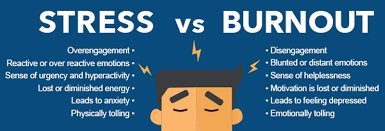What Are the Best Practices for Preventing Burnout and Fatigue?
To prevent burnout and fatigue, prioritizing self-care is essential. Implementing boundaries between work and personal life, practicing mindfulness, and engaging in regular physical activity are key practices.

Introduction
Burnout and fatigue have become increasingly common in today's fast-paced world. Long hours, high expectations, and constant connectivity make it easy to feel exhausted and overwhelmed. However, adopting best practices to prevent Burnout and Fatigue can lead to better productivity, improved mental health, and overall well-being. This guide outlines practical strategies to help you maintain a healthy work-life balance and sustain energy levels.
Understanding Burnout and Fatigue
What is Burnout?
Burnout is a state of physical, emotional, and mental exhaustion caused by prolonged stress. It is often linked to work-related pressures but can also stem from personal responsibilities.
What is Fatigue?
Fatigue is a constant feeling of tiredness or lack of energy. Unlike normal tiredness, fatigue does not go away with rest and can affect daily functioning.
Symptoms of Burnout and Fatigue
-
Persistent exhaustion
-
Decreased motivation
-
Irritability and frustration
-
Reduced productivity
-
Difficulty concentrating
-
Physical symptoms like headaches and muscle pain
-
Emotional detachment
Best Practices to Prevent Burnout and Fatigue
1. Prioritize Work-Life Balance
Maintaining a balance between professional and personal life is crucial in preventing burnout.
-
Set clear boundaries between work and personal time.
-
Avoid checking emails or taking work calls outside of work hours.
-
Engage in hobbies and activities that bring joy.
2. Manage Stress Effectively
Effective stress management reduces the risk of burnout.
-
Practice deep breathing exercises.
-
Engage in mindfulness and meditation.
-
Listen to calming music or engage in relaxation techniques.
3. Get Enough Quality Sleep
Poor sleep contributes significantly to fatigue and burnout.
-
Follow a consistent sleep schedule.
-
Avoid screens at least an hour before bed.
-
Create a comfortable sleeping environment.
4. Take Regular Breaks
Breaks help refresh your mind and body.
-
Follow the Pomodoro technique (work for 25 minutes, then take a 5-minute break).
-
Step outside for fresh air.
-
Stretch to relieve muscle tension.
5. Maintain a Healthy Diet
Nutritious food fuels the body and mind.
-
Eat balanced meals rich in protein, fiber, and healthy fats.
-
Stay hydrated by drinking plenty of water.
-
Avoid excessive caffeine and sugar.
6. Exercise Regularly
Physical activity enhances energy levels and reduces stress.
-
Engage in at least 30 minutes of moderate exercise daily.
-
Try yoga, jogging, or strength training.
-
Take walks during breaks to stay active.
7. Foster Strong Social Connections
Support from family, friends, and colleagues helps in reducing stress.
-
Communicate openly about your feelings.
-
Spend quality time with loved ones.
-
Join social or community groups for interaction.
8. Learn to Say No
Taking on too many responsibilities leads to exhaustion.
-
Set realistic expectations.
-
Prioritize tasks based on importance.
-
Politely decline additional work if necessary.
9. Delegate Tasks
Sharing responsibilities lighten your workload.
-
Assign tasks to team members.
-
Seek help from family members in household chores.
-
Automate repetitive tasks where possible.
10. Develop a Positive Mindset
A positive approach to life reduces stress and enhances resilience.
-
Focus on solutions rather than problems.
-
Practice gratitude by noting daily positives.
-
Avoid negative self-talk and engage in self-compassion.
11. Seek Professional Support
If burnout symptoms persist, professional guidance is beneficial.
-
Consult a therapist or counselor for support.
-
Join support groups for shared experiences.
-
Consider professional coaching to manage stress better.
12. Adjust Workplace Environment
An improved work environment prevents stress and enhances productivity.
-
Ensure ergonomic workspace setup.
-
Minimize distractions.
-
Use productivity tools to manage workload efficiently.
Conclusion
Preventing burnout and fatigue requires conscious effort and lifestyle adjustments. By prioritizing self-care, setting boundaries, and managing stress effectively, you can maintain high energy levels and overall well-being. Implementing these best practices ensures long-term productivity, happiness, and a balanced life.
What's Your Reaction?











